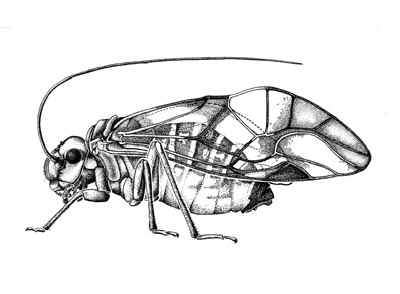
Order
PSOCOPTERA(Greek, psocus = biting; pteron = wing)Common Names
booklice, barklice
Description
Psocids are tiny insects that are extremely common but so small that they are frequently overlooked. Wings may be present, reduced or absent. If present, wings are membranous with small numbers of veins. Wings are held "roof-wise" over the insect�s abdomen when at rest. The front and rear wings are coupled together to form a single surface during flight. Winged species have large compound eyes and three simple eyes (ocelli) but the simple eyes are absent in wingless species. Mandibles are well developed. The antennae are long and composed of short, straight segments (filiform).
Life Cycle
The eggs are laid in small clusters and covered with a sheet of fine silk web. Juveniles emerge from the eggs as wingless miniatures of the adults (nymphs) and attain maturity through a series of moults.
Food
Psocids feed on fungi (hyphae and spores), lichens, algae, bark and plant debris.
Importance
Generally of little human impact, the importance of booklice is only noted under unusual circumstances. Booklice may live among old papers in human dwellings and can cause considerable damage by their feeding actions. They scrape off the surface fibres of the sheets of paper. Some species have caused considerable damage to both herbarium and museum specimens. In nature, the booklice form part of the foodwebs of ecosystems.